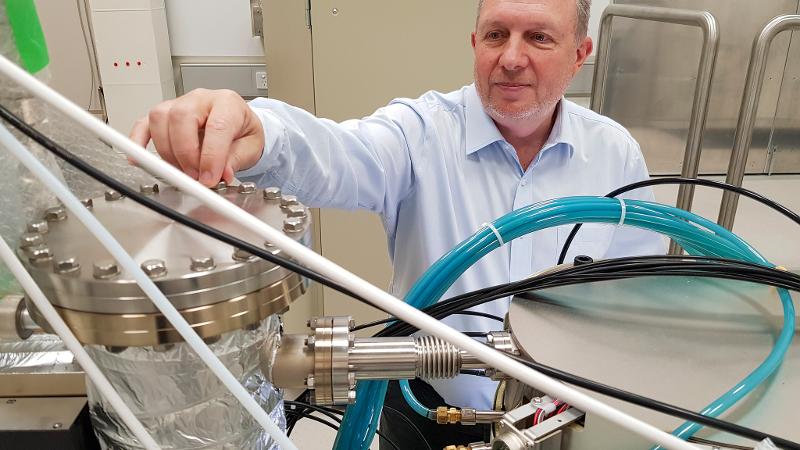
Researchers in Australia will be able to perform unprecedented experiments with unique access to a state-of-the-art high-resolution transmission electron microscope, allowing them to view real-time processes at an atomic scale - trillionths of a metre.
QUT has the first Australian-based TEM-ARM200F ‘NeoARM’ Atomic Resolution Transmission Electron Microscope manufactured by JEOL. Installation began in September 2020 with operations expected to commence in early 2021.
Australian Research Council Laureate Fellow Professor Dmitri Golberg, co-director of the QUT Centre for Materials Science, said the NeoARM would help advance understanding in materials science, physics, polymer science and bioengineering.
“The NeoARM will allow researchers to access high-resolution imaging of materials containing light elements and specimens susceptible to electron-beam irradiation,” Golberg said.
“We also plan to achieve a very high level of a spatial resolution, better than 80pm, or 80 trillionths of a metre, which means we can visualise the atomic structure and detailed crystallography, even individual atoms of any material.
“Its electron gun is modulated by a 10 MHz electrostatic beam deflector. In addition, a laser beam comes through a special holder to the sample site, so the dynamic experiments with a temporal resolution better than fractions of microseconds will be possible.”
Researchers were already planning Australian-based time-resolved experiments involving catalytic processes and atomic changes under light, according to Golberg, who said the NeoARM’s tuneable voltage would provide a rare opportunity to analyse beam-sensitive materials, like polymers and bio-samples.
Atomic resolution and aberration correction
The NeoARM’s cold field emission gun (Cold-FEG) in combination with Cs corrector (ASCOR) enables atomic-resolution imaging at not only 200 kV accelerating voltage, but also a low voltage of 30 kV.
It is also equipped with an automated aberration correction system that incorporates JEOL’s new aberration correction algorithm for automatic fast and precise aberration correction.
This system enables higher-throughput atomic-resolution imaging even at low accelerating voltages.
It also includes a new scanning tunnelling electron microscope (STEM) detector that provides enhanced contrast of light elements and new imaging technique (e-ABF: enhanced ABF), facilitating observation of light-element materials.
Specialist operators
Access to the NeoARM is managed through the QUT Central Analytic Research Facility, which will provide a dedicated and qualified technician and researcher to help or guide users.
Engineers from manufacturer JEOL will also provide technical support to QUT operators.
Specialist training is required to operate the NeoARM and can take more than six months to complete. Machine operators will need to pass induction before being permitted to use the device.
The NeoARM cost almost $4.7M with $2.7M funded through the Australian Research Council Linkage scheme, $1.5M from the Strategic Major Equipment Program, and $500K comprised of $100K contributions from The University of Sydney, The University of Queensland, Griffith University, Australian National University and the University of New South Wales.


